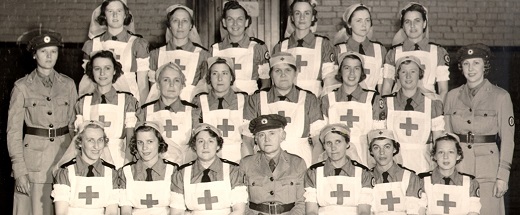History of Women in the Red Cross
 The Canadian Red Cross has a long and proud history of women involved in its humanitarian service. Today, with more than 100 years of providing help and hope, women are still playing a vital role in the Red Cross.
The Canadian Red Cross has a long and proud history of women involved in its humanitarian service. Today, with more than 100 years of providing help and hope, women are still playing a vital role in the Red Cross.World War II & After
During World War II and after, 15,000 women were recruited to form a volunteer service group known as The Canadian Red Cross Corps. Thousands of women from across Canada mobilized to serve in four divisions, each with a specific role and a distinctive uniform.
A special Overseas Detachment of 641 brave women crossed the Atlantic to serve overseas during and after World War II. They drove ambulances, supported patients and assisted staff in military hospitals. Courageous, strong and perhaps ahead of their time, they carried with them the strength and good wishes of many women who could not leave home.
Those who stayed behind mobilized to make bandages, sew surgical gowns, and assemble food parcels for shipment overseas. These food packages were lifelines to prisoners of war who had no contact with the outside world.
Between 1945 and 1947, a delegation of 58 Corps volunteers escorted nearly 45,000 war brides and their 21,000 children on their transatlantic journey to Canada. This was the largest mass migration of women and children in Canadian history.
Modern Era & the Tiffany Circle
The next generation of women have taken up new roles to help the most vulnerable in their communities through the Red Cross. Today, women are active as volunteers, staff members and international delegates.
Woman can also become involved in the Red Cross movement by joining the Tiffany Circle. It’s one way the Red Cross is encouraging female volunteers and philanthropists to follow in the footsteps of a long line of women leaders, as modern-day heroes. Members of the Canadian Tiffany Circle are helping to shape the future of Canada’s humanitarian landscape and are creating their own lasting legacy.
